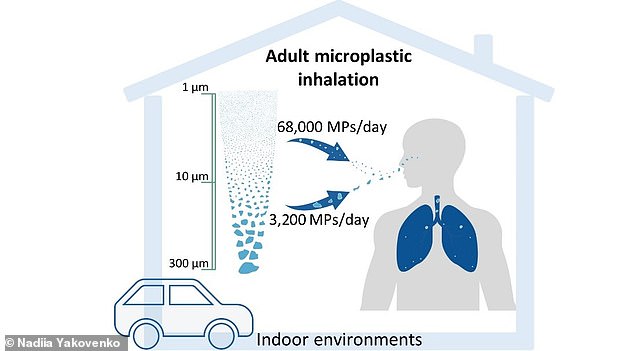
Study Finds Daily Microplastic Inhalation in Homes, Cars 100 Times Higher Than Past Estimates
Microplastics Invade Homes and Cars: Study Reveals Shockingly High Inhalation Rates
Microplastics, found everywhere from the Mariana Trench to Mount Everest, are also flooding the air in our homes and cars. A groundbreaking study from the University of Toulouse reveals adults inhale roughly 68,000 microplastic particles daily—100 times more than previously estimated. These particles, measuring ≤10 micrometers, are small enough to penetrate deep into our lungs, releasing toxins linked to chronic diseases.
Airborne Threats in Everyday Spaces
Researchers collected air samples from homes and cars during typical daily activities. Using Raman spectroscopy, they detected an average of 528 particles per cubic meter in homes and a staggering 2,238 particles per cubic meter in cars. Over 94% of these particles were under 10 micrometers, posing a higher risk for lung infiltration.
Image suggestion: A scientist collecting air samples in a home, with text overlay: "528 microplastic particles per cubic meter found indoors."
Why Smaller Particles Matter
Earlier studies focused on larger microplastics (20–200 micrometers), but this research highlights dangers of smaller, inhalable particles (1–10 micrometers). Adults may breathe in ~3,200 larger particles daily, but the 68,000 smaller particles dominate exposure. These tiny plastics bypass natural filters, lodging deep in lung tissue and potentially entering the bloodstream.
“These particles release toxic additives in our lungs, causing harm over time,” warned researchers. Synthetic fabrics, household dust, and car interiors are key sources.
Image suggestion: Close-up of dust particles under a microscope, labeled "Microplastics in Household Air."
Growing Health Concerns
Though research is early, microplastics’ chemical additives—some carcinogenic—are alarming. Rodent studies show organ damage and inflammation, while human studies suggest links to heart disease, respiratory issues, and bowel cancer.
Image suggestion: Illustration showing microplastics entering lungs and bloodstream, with icons of heart and lungs.
Reducing Exposure
To minimize risk:
- Ventilate homes to reduce particle buildup.
- Use air purifiers with HEPA filters.
- Choose natural fabrics over synthetic textiles.
- Dust regularly to remove settled plastics.
A Call for Awareness
“Indoor air is a major, underestimated exposure route,” the team stressed. As microplastic pollution grows, understanding its health impacts becomes urgent.
Final image suggestion: Family in a living room with open windows, captioned: "Reducing microplastic exposure starts at home."
This study underscores the invisible threat lurking in everyday spaces—a wake-up call to address plastic pollution’s far-reaching consequences.

